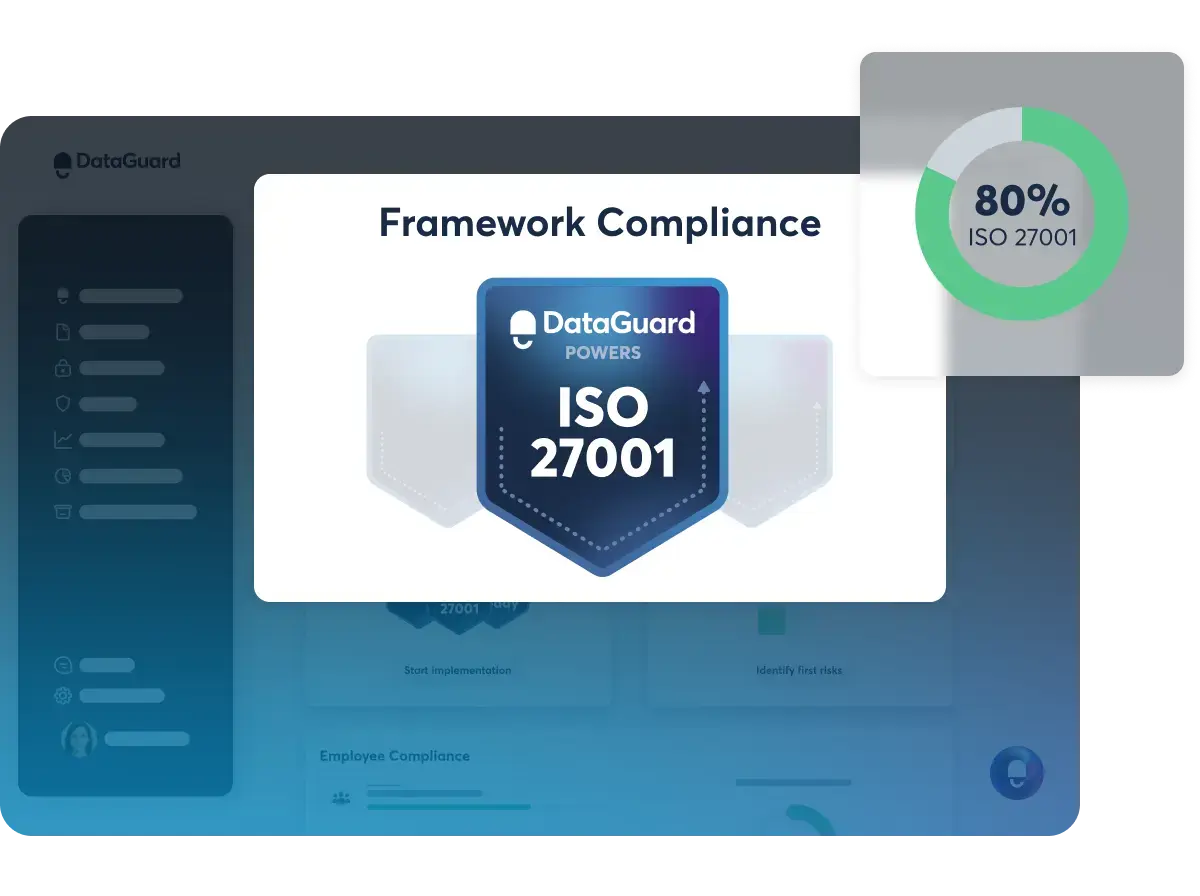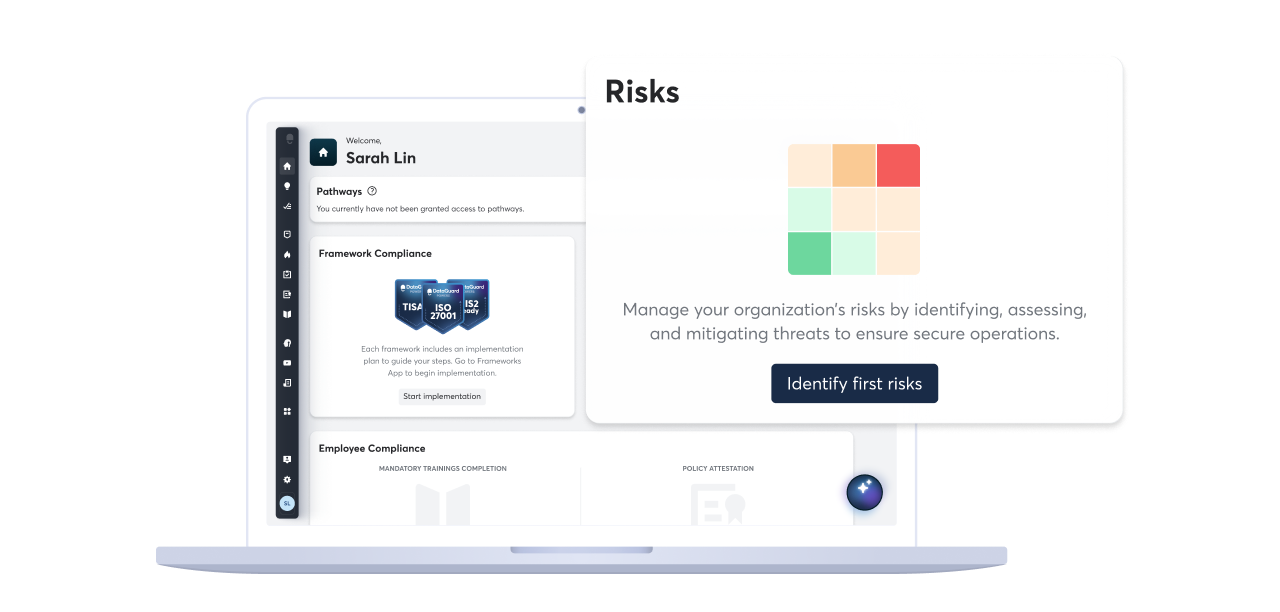What does ISO 27001 require when conducting a risk assessment?
According to ISO 27001 (section 6.1.2), your risk assessment methodology must be documented. You need a clear plan and instructions to set up your organization for success. As a starting point, here is what section 6.1.2 requires:
Define how to spot the threats that might compromise your data's confidentiality, integrity, and availability
Establish a method for identifying the risk owners
Define the criteria for evaluating repercussions and determining the risk's likelihood
Define a method for calculating risk
Define your risk-acceptance criteria
In short, you need to identify these five aspects to achieve ISO 27001 compliance. Use this as a foundation for your plan.
ISO 27001's approach to treating risks
A risk treatment plan (RTP) is another essential aspect of the ISO 27001 implementation process that outlines how your organization responds to recognized threats. You can mitigate or even completely remove risks by using the following treatment options:
Implementing a security control to reduce the likelihood of the risk materializing
Avoiding the risk by stopping any activity that may increase its likelihood
Obtaining cyber insurance and transferring the risk to a third party
Retaining the risk by accepting it if the cost of potential damage will be less than the cost of preventing it
The seven steps to an effective ISO 27001 risk assessment
A risk assessment process that meets the requirements of ISO 27001 should have these steps:
1. Establish an ISO 27001 risk assessment framework
It's important for your organization to handle risk assessment consistently. Therefore, you need to develop guidelines that outline the process for all business functions.
You should define across the organization what level of risk is acceptable, and whether you want to carry out a qualitative or quantitative risk assessment. A qualitative approach evaluates risks based on professional judgement and descriptive factors, while a quantitative approach uses numerical data and statistical models to measure risk levels and probabilities.
Several aspects must be addressed in a formal risk assessment methodology:
The most important security criteria for your organization
The scale of applicable risks
The organization's appetite for risk
2. Create a list of your organization's potential risk scenarios
There are two different approaches to this step. The first method is scenario-based. Here, you focus primarily on scenarios that could pose a real threat, such as a ransomware attack or a distributed denial-of-service (DDoS) attack.
The second method is asset-based, focusing on risks related to your information assets. With this approach, it typically takes longer to identify risks, because you need a full view of all of the data your organization manages.
3. Identify risks
Now, you can start identifying which potential problems may affect you. Use our library of risk scenarios on our platform, or add your own.
4. Evaluate risk impact
Some risks are more severe than others, so you need to decide which should be treated as a priority based on your organization's unique circumstances. It's critical to rank risks according to their likelihood of occurrence and the potential damage they can inflict, so you know which ones to address first.
5. Create a Statement of Applicability
The Statement of Applicability (SoA) illustrates your organization's security profile. You must identify all the security controls you have implemented, why you have selected them, and how you have configured them based on your risk assessment results.
This document is crucial since it will be used as the audit's central guideline by the certification auditor to achieve ISO 27001 certification.
6. Create a risk treatment plan
According to ISO 27001, you must identify risk owners for all risks. They are in charge of approving any risk mitigation strategies and accepting the residual risk level.
Human error introduces numerous risks to an organization, which you can rarely eliminate entirely. As a result, most risks will have to be mitigated, instead of completely addressed. An effective mitigation strategy starts by implementing controls described in ISO 27001 Annex A.
7. Review, monitor, and conduct an internal audit
To guarantee that you have accounted for changes in how your organization functions and the evolving threat environment, you have to repeat your risk assessment process every year.
Mitigation techniques, responsibilities, budget, and timelines should all be included in the risk assessment strategy.
You should also take advantage of this chance to improve your ISMS. This might include moving to a new risk treatment option for different threats or adopting a more effective control to handle risks if your previous solutions did not meet expectations.
Learn more about how to run an internal audit in this article.

